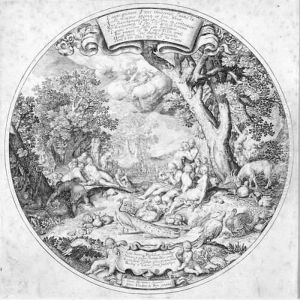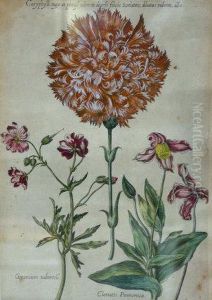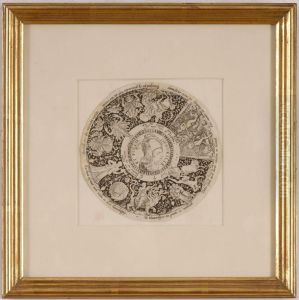Johann Theodore De Bry Paintings
Johann Theodor de Bry was a notable figure in the world of engraving and publishing during the late 16th century. Born in 1528 in Liège, Prince-Bishopric of Liège, now in modern-day Belgium, de Bry was part of a family deeply involved in the arts; his background was instrumental in shaping his career in engraving and publishing. Despite the rich cultural environment of his homeland, de Bry's ambitions and circumstances led him to move across Europe, eventually settling in Frankfurt am Main, in the Holy Roman Empire, where he would make his most significant contributions to the world of art and publishing.
De Bry's work is particularly renowned for its intricate detail and the role it played in the dissemination of visual information about the New World to the European public. After converting to Protestantism, de Bry found himself in conflict with the Spanish authorities in the Low Countries, prompting his move to Strasbourg and later to Frankfurt. It was in Frankfurt that he established his own publishing house, which became famous for producing illustrated books. His most famous works are the 'Grands Voyages' and 'Petits Voyages' series, which documented and illustrated the explorations of the New World, Africa, and Asia. These works were pivotal in shaping European perceptions of these distant lands and their peoples during the age of exploration.
De Bry's engravings are characterized by their detailed and often imaginative depiction of landscapes, flora, fauna, and indigenous peoples, drawing on the accounts of explorers and missionaries. His work not only served as a primary source of information for many Europeans but also as a catalyst for the growing interest in exploration and colonization. De Bry's legacy is a complex one; while he contributed significantly to the spread of knowledge and the art of engraving, his representations of non-European peoples and cultures were very much a product of the colonial mindset of his time.
Johann Theodor de Bry died in 1598 in Frankfurt. His sons and other family members continued his publishing legacy, ensuring that the de Bry name remained influential in European publishing and art for decades after his death. Through his detailed engravings and the broad dissemination of his published works, de Bry played a critical role in the visual culture of the European Renaissance, particularly in the context of the era's expanding geographical and cultural horizons.




